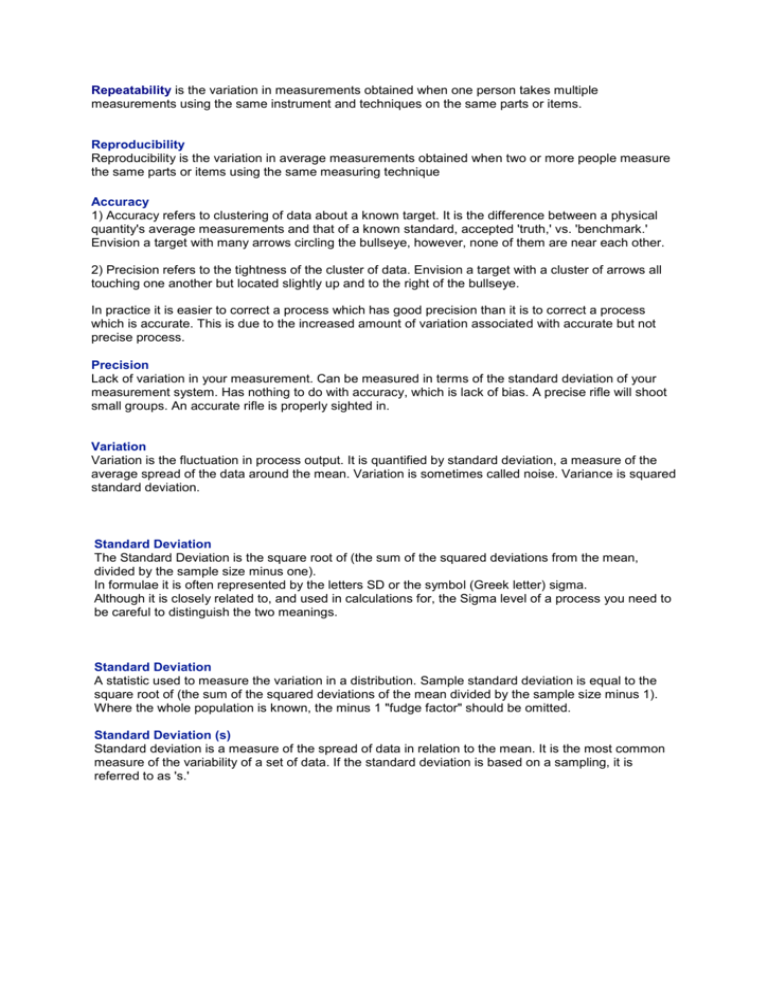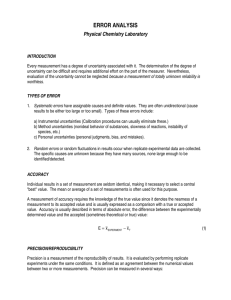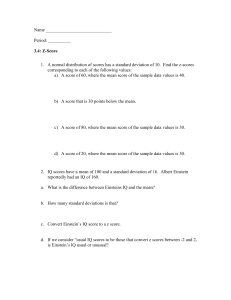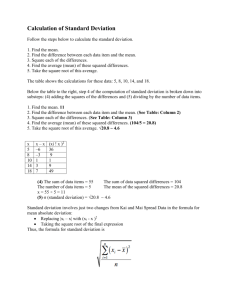Repeatability is the variation in measurements obtained
advertisement

Repeatability is the variation in measurements obtained when one person takes multiple measurements using the same instrument and techniques on the same parts or items. Reproducibility Reproducibility is the variation in average measurements obtained when two or more people measure the same parts or items using the same measuring technique Accuracy 1) Accuracy refers to clustering of data about a known target. It is the difference between a physical quantity's average measurements and that of a known standard, accepted 'truth,' vs. 'benchmark.' Envision a target with many arrows circling the bullseye, however, none of them are near each other. 2) Precision refers to the tightness of the cluster of data. Envision a target with a cluster of arrows all touching one another but located slightly up and to the right of the bullseye. In practice it is easier to correct a process which has good precision than it is to correct a process which is accurate. This is due to the increased amount of variation associated with accurate but not precise process. Precision Lack of variation in your measurement. Can be measured in terms of the standard deviation of your measurement system. Has nothing to do with accuracy, which is lack of bias. A precise rifle will shoot small groups. An accurate rifle is properly sighted in. Variation Variation is the fluctuation in process output. It is quantified by standard deviation, a measure of the average spread of the data around the mean. Variation is sometimes called noise. Variance is squared standard deviation. Standard Deviation The Standard Deviation is the square root of (the sum of the squared deviations from the mean, divided by the sample size minus one). In formulae it is often represented by the letters SD or the symbol (Greek letter) sigma. Although it is closely related to, and used in calculations for, the Sigma level of a process you need to be careful to distinguish the two meanings. Standard Deviation A statistic used to measure the variation in a distribution. Sample standard deviation is equal to the square root of (the sum of the squared deviations of the mean divided by the sample size minus 1). Where the whole population is known, the minus 1 "fudge factor" should be omitted. Standard Deviation (s) Standard deviation is a measure of the spread of data in relation to the mean. It is the most common measure of the variability of a set of data. If the standard deviation is based on a sampling, it is referred to as 's.'











